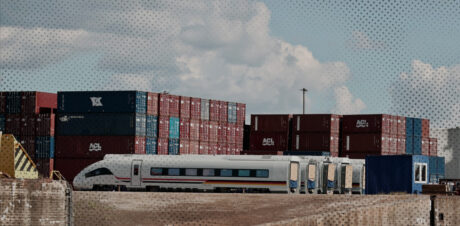Tariffs are impacting automakers globally. European manufacturers face challenges because the U.S. is the largest export market for these automakers. For American car buyers, the effect on their wallets isn’t limited to European imports: global supply chains mean U.S.-built cars will cost more because these models rely on foreign parts subject to tariffs.
Automakers have several levers to pull in response to the current dynamic tariff landscape: nearshoring and reshoring, diversifying supplier networks, adjusting pricing, shifting R&D priorities, and advocating for policy change. In addition, many U.S. OEMs have announced plans to invest in domestic production. GM, for example, announced plans to invest about $4 billion in coming years to increase U.S. production of both gas and electric vehicles.
Increasing domestic production or relocating production are long-term solutions that require capacity and ramp-up time in addition to investment. In the meantime, diversifying suppliers can help automakers navigate this period of economic uncertainty and reap beneficial results more rapidly.
Diversification as a near-term response to tariffs
Modern challenges such as tariffs, geopolitical and national security concerns, and a global pandemic have proven that relying on just one country or region for a specific product’s supply is no longer wise. Supply chain diversification is a sound response to today’s challenges, delivering benefits such as:
- Reduced risk and strengthened resilience: In a period of uncertainty, diversification helps control for wild swings in any one country’s tariff rates and helps organizations become more resilient and better equipped to handle ongoing fluctuations. Although diversification adds complexity to an organization’s supply chain, the action is often worth this result in highly unpredictable environments.
- Expediency: Organizations in search of near-term tariff relief will find it quicker to change suppliers than relocate production.
- Better negotiation power and improved competitiveness: Having multiple suppliers gives companies leverage in price negotiations and helps ensure competitive pricing, which can be particularly valuable when prices are likely to rise in response to increased costs.
However, achieving agile diversification requires real-time, granular visibility into an organization’s entire supply chain and the ability to rapidly assess the implications of trade policy changes.
>> Discover proactive tips your organization can use to navigate the fluid tariff landscape <<
How Sayari helps automakers diversify their supply chains
Sayari helps organizations efficiently mitigate supply chain disruptions by identifying alternate suppliers in response to the fluid tariff environment.
Sayari Map’s Tariff Feature enables instant identification and mapping of tier 1 suppliers exposed to active tariff regimes by filtering based on “ships from” locations rather than corporate headquarters. This provides precise visibility into supplier relationships that directly affect landed costs under current tariffs. The solution extends visibility beyond tier 1 to upstream suppliers (t2–t5) using “ships from” and “ships to” filters, allowing automakers to identify hidden dependencies and tariff exposure throughout the supply chain.
In addition, Sayari Graph’s Advanced Search features allow users to identify alternative suppliers operating in more tariff-friendly jurisdictions. This is enabled by the 8+ billion records in Sayari’s database that include both detailed information on entities from corporate registries and trade records from jurisdictions worldwide. Corporate registries, which often require that companies disclose their nature of business, allow Graph users to search worldwide for suppliers that match their business needs. Trade records include bill of lading information which captures descriptions of the products contained in shipments sent and received by consignors and consignees. Using this information, users can conduct a precise advanced search to identify specific products and components from which to build a list of potential alternative suppliers.
>> See how to get greater visibility into supplier networks to map alternative sourcing options <<
Unlike competitors that require sensitive spend data uploads for tariff calculations, Sayari provides immediate supplier identification without sharing confidential information, enabling faster response to rapidly changing tariff environments.
Organizations save time and resources on the front end by automating tariff impact analysis and, on the back end, by allowing filtered supplier groups to be saved for continuous monitoring and ongoing analysis.
To learn more about how Sayari helps transform tariff management from reactive cost absorption into proactive competitive advantage, request a demo.



